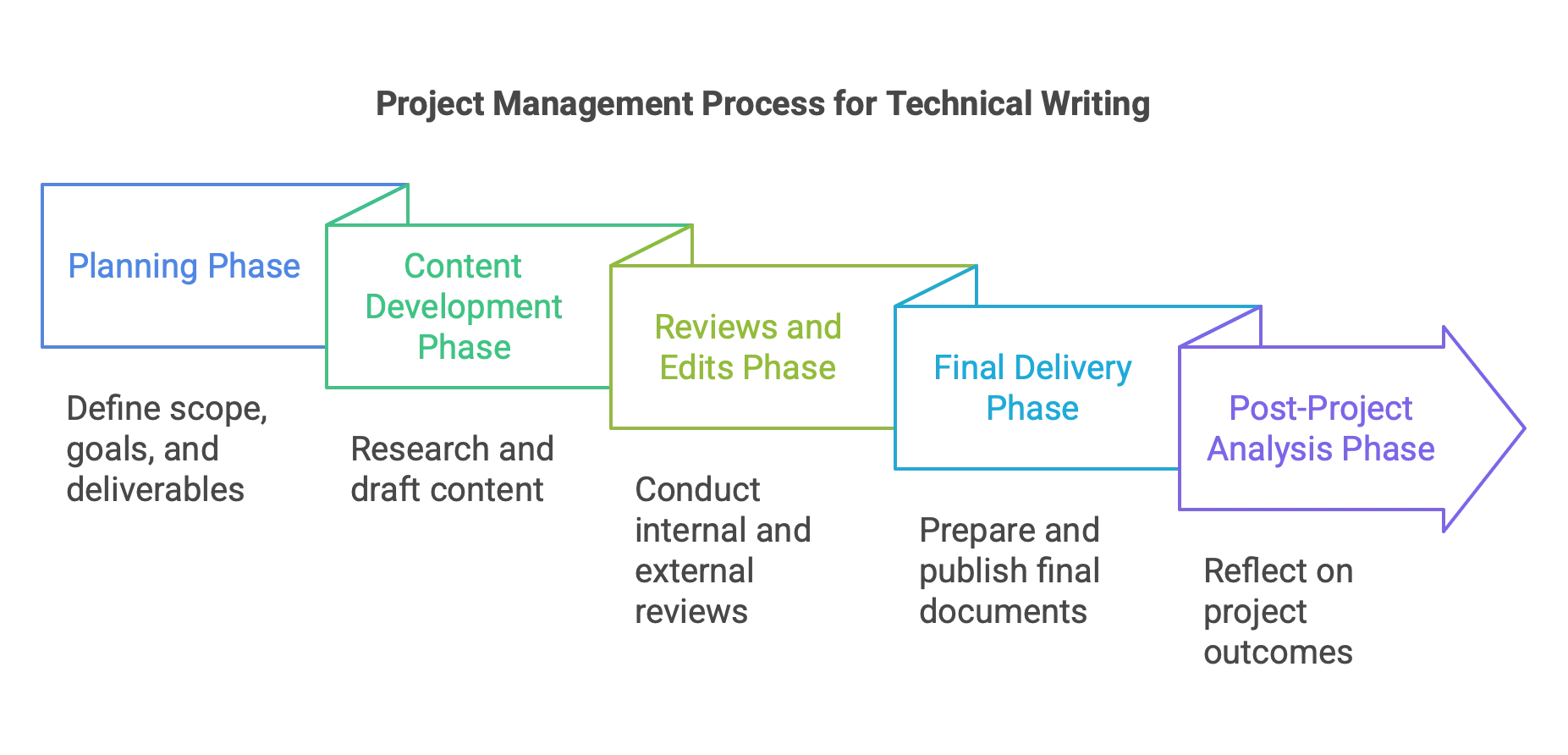Project Management with a Bit of Magic
Plan, manage, and deliver projects efficiently. Merlin Project for macOS and iOS

With this template, you set up technical documentation projects quickly and systematically and spot potential risks earlier. Download our template for free and lead your project to success.
Table of contents
General structure of the project plan
Phase 1 – Planning
Phase 2 – Content development in 2-week sprints
Phase 3 – Publication
Phase 4 – Post-project analysis
Next steps
Facing a large documentation project? Then you should take the time to plan it thoroughly. Whether it’s an installation guide, administrator guide, API reference, or release notes—creating documentation is an art in itself. To help, we created this free template. It’s divided into Planning, Content development in sprints, Publication, and Post-project analysis. We deliberately work in agile sprints to incorporate feedback quickly and steer iterations in a controlled way.

The tasks in the template are intentionally set to one day. Treat these times merely as placeholders. The real effort depends on the number, scope, and depth of the documents needed: the more artifacts, the more review cycles—and the longer the project. Replace the placeholders later with realistic estimates.
Start with an output list (which documents, versions, languages?) and define your target audiences/personas. Check your available sources (specifications, user stories, code, tickets) and plan review cycles (internal/external) realistically. Consider regulatory/quality (terminology, translations), the toolchain (docs-as-code, build, style-guide maturity), and risks (release shifts, resources).

In planning, you define goals, output, and responsibilities and create the foundation for smooth sprints.
Practical tip:
Use the RACI model to define accountabilities:
Here’s how to proceed:

Content is created iteratively here. We group Sprint 1–∞ under one umbrella and currently plan two-week sprints—a mark of agile project planning: short cycles, early feedback, visible progress.
How to execute your sprints effectively:

Turn deliverable content into high-quality artifacts (HTML, PDF, optionally ePub) that are published flawlessly and consistently.
Practical tip:
Keep content modular (topics, includes, attributes) and automate exports via CI. We recommend AsciiDoc as the documentation language. We use it ourselves for our documentation.
You anchor learning in the team and improve process, tooling, and collaboration for the next release.
Practical tip for the retrospective:
Ask yourselves: What went well? What didn’t go well? What will we change?
This lets you learn from your insights for future projects and finalize new documentation faster, at lower cost, and in higher quality.

Tip: Don’t underestimate risk management. We’ve already attached a few potential risks in the project. Use this as a basis to identify more risks and define countermeasures..)
If you have questions about this blog post or want to discuss it, we look forward to your post in our forum.
Your ideas, our magic – make projects easy! Test now 30 days for free.
